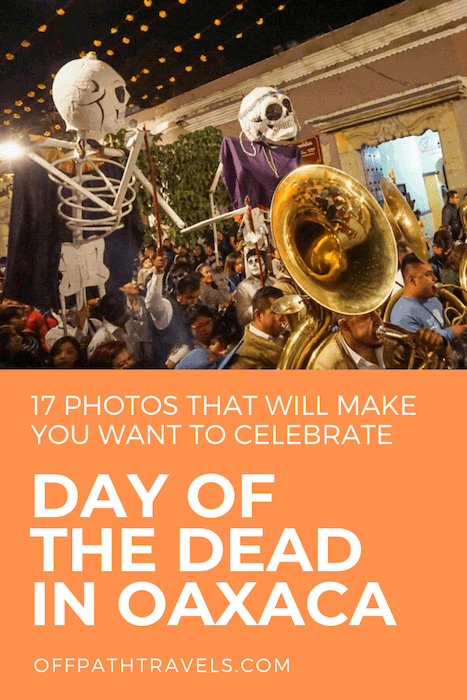Fiery orange cempasúchil flowers hanging above the streets, the smell of copal incense rising in the air, skeletons dancing in the plaza, and non-stop fireworks lighting up the sky. It’s Dia de Muertos in Oaxaca, Mexico!
If you’ve seen the Disney movie, Coco, you already know what I’m talking about. If you haven’t, please go watch it right after reading this post. Yes, it’s really that good!
This post may contain affiliate links. If you make a purchase we may receive a small commission at no extra cost to you which helps support our work.
Since the release of Coco in 2017, Dia de Muertos, or Day of the Dead, has become increasingly well-known in the US. Even Target is selling Dia de Muertos decorations now! What many people don’t know is that this Mexican holiday actually traces back thousands of years to pre-hispanic Aztec traditions. It’s based on ancient rituals honoring the souls that had passed on to the underworld.
Nowadays, Day of the Dead is celebrated throughout Mexico. Usually by building an altar in your home to honor your deceased loved ones and going to their graves to visit them.
One of the BEST places to experience it is in the southern city of Oaxaca. We spent over a month in this capital city and it’s one of our favorite spots in the world (especially during Day of the Dead). Learn about the history and traditions of Day of the Dead in our post: How to Celebrate Dia de Muertos in Oaxaca.
Without a doubt, visiting Oaxaca during Day of the Dead should be at the top of your bucket list. Don’t believe me? Here are 17 photos to show you why.
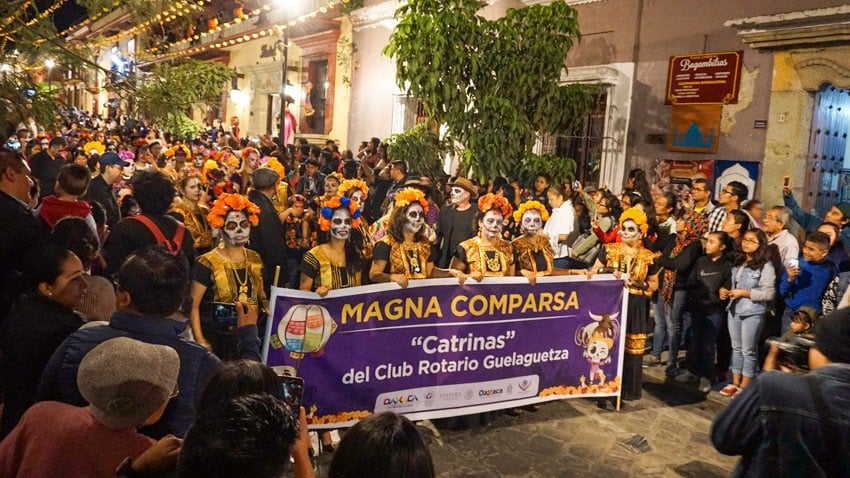
Magna Comparsa is the annual Day of the Dead “mega parade” in Oaxaca. Here the local Rotary Club members are dressed as catrinas. The catrina is a symbol in Mexico for making fun of death. It’s one of the most popular costumes during Day of the Dead. They usually wear flowers in their hair, skull face makeup and elegant dresses.

Here’s a row of catrinas walking on stilts during the mega parade.

Giant paper puppets are very common during the week or so of Dia de Muerto celebrations.

There were too many bands to count marching by in this parade. Our favorite had this puppet couple following behind them.

This is the seasonal pan de muertos, or bread of the dead. There are different variations, but these include little heads sticking out of the bread almost as if they were buried in it. You can find this bread for sale at several of the Oaxaca City markets.
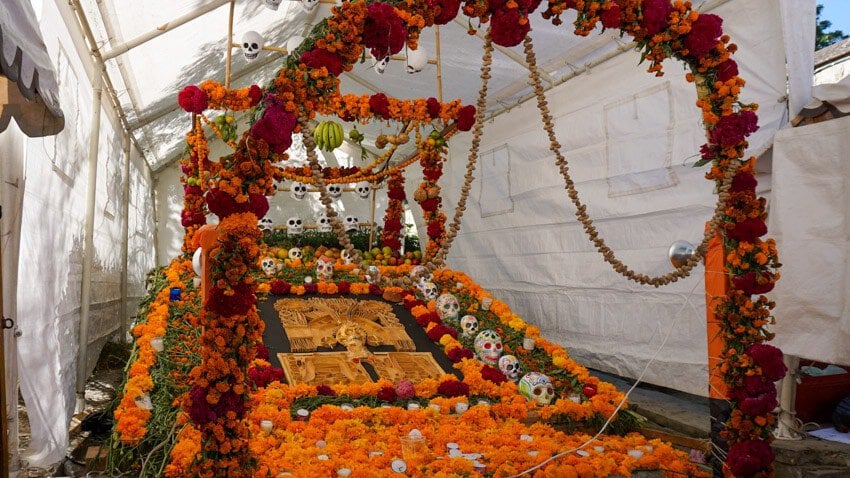
Altars are everywhere you look in Oaxaca during Day of the Dead. This one had was carpeted in flowers and had an Aztec-like carving in the center. If you want to see some pre-hispanic ruins while in town, make sure to visit Monte Alban.
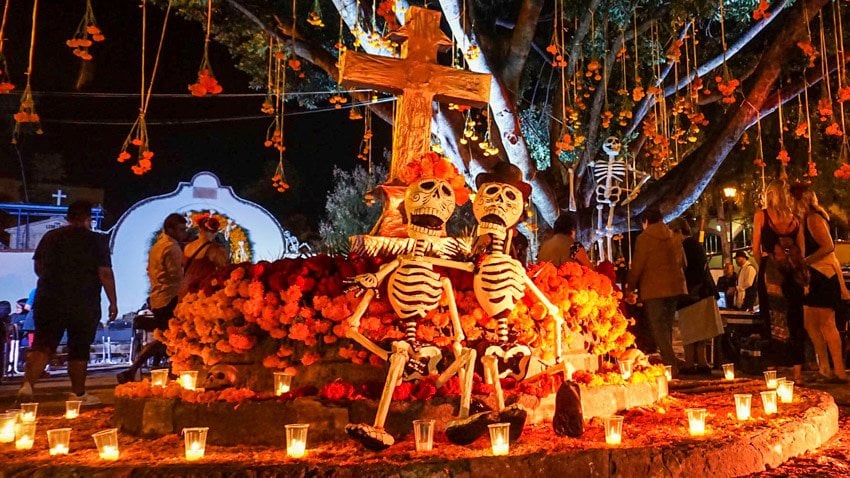
There are numerous city-sponsored Day of the Dead events throughout Oaxaca. This one featured free Mexican hot chocolate and pan dulce (sweet bread) and live music.

This is the second-biggest altar we saw and it was located next to the cathedral in the city’s main square, El Zocalo.

The largest altar in Oaxaca is right in front of El Zocalo; one of the most popular places to hang out in the city. Check out our Ultimate Guide to Oaxaca for more tips on things to see and do.

A closeup of one of the Day of the Dead altars. The altars are mindfully decorated with items that deceased loved ones enjoyed during their time alive, including their favorite foods and drinks. Speaking of food and drinks, make sure to read our post on Where to Eat and Drink in Oaxaca.

This altar goes heavy on the food by displaying beer, soda, Oaxaca’s world-famous mole, blue corn tortillas, and (of course) pan de muertos.

Dia de Muertos is all about remembering and honoring those who have passed. One of the most important things to do is to go to the cemetery to clean up and decorate your families’ graves.

Musicians wander through the rows of tombs offering their services to families celebrating Day of the Dead at the Panteon General in Oaxaca, Mexico.

A family spends the afternoon enjoying the company of their loved ones, including the spirits of those who have passed.

An altar inside a local’s home featuring photos of their grandmother, her favorite beer, and a plate of pollo con mole (chicken with mole).
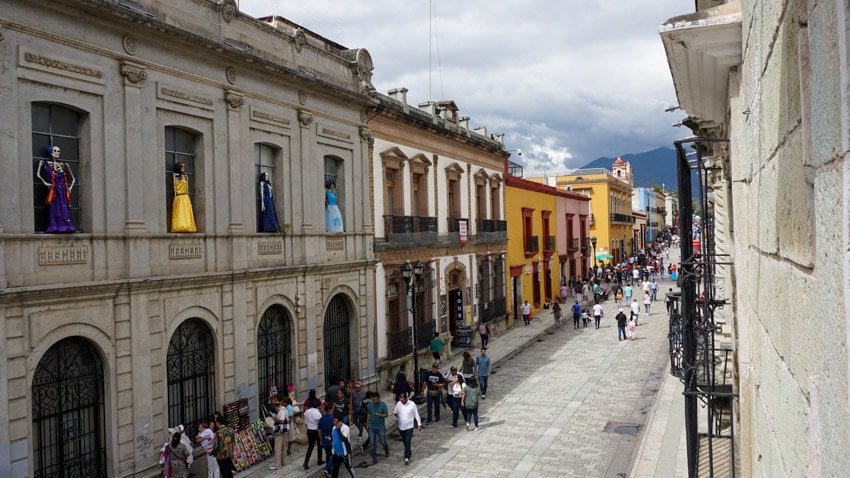
The main pedestrian-only street in Oaxaca City. During the night it becomes a host to a festive crowd of performers, tourists, and locals celebrating Day of the Dead.
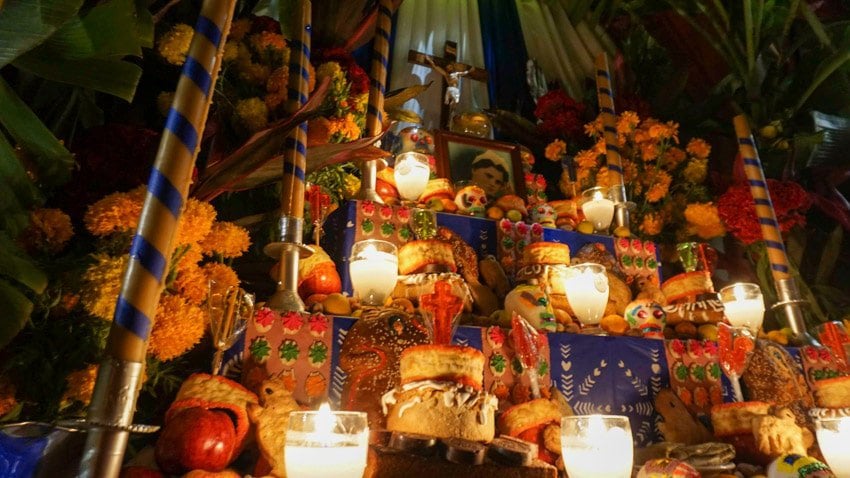
A closeup of another Day of the Dead altar. This one has plenty of sugar skulls, hand-cut tissue paper known as papel picado, and pastries.
What do you think about the Day of the Dead? Leave us your thoughts in the comments below.
Like This Post? Pin It!
